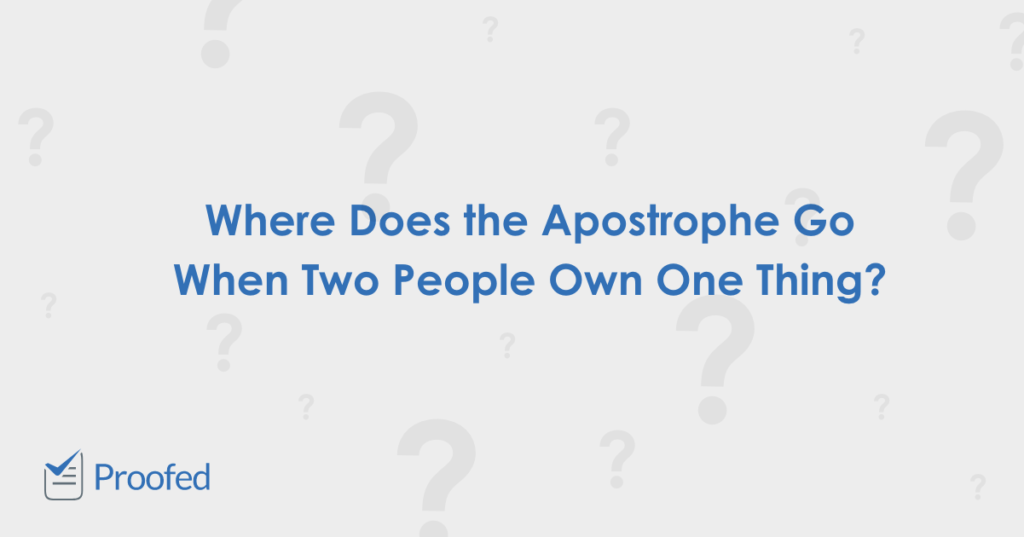We’ve written about apostrophes before on this blog, but today we want to look specifically at possessive apostrophes. Join us, then, for a quick look at who owns what, including how to handle cases of joint ownership.
Possessive Apostrophes
Possessive apostrophes indicate ownership. Typically, this involves adding an apostrophe plus the letter “s” after a noun or someone’s name:
Morgan’s pencil was sharp.
The car’s tire is flat.
Here, for example, the apostrophes in the sentence above show us that the pencil belongs to Morgan and that the tire belongs to the car.
Possessive Apostrophes After “S”
The main variation on the rule above occurs when a word already ends in the letter “s.” In this case, you can either:
- Add an apostrophe plus another “s” (e.g., Alanis’s grasp of irony…)
- Or just use the apostrophe by itself (e.g., Alanis’ grasp of irony…)
Both are acceptable in modern English. However, if you’re writing an essay, you may want to check your style guide for advice on which approach to use.
Plurals and Possessive Apostrophes
Plurals that end in “s” sometimes cause confusion when using a possessive apostrophe. The key is that possessive apostrophes should always go after the final “s” in a plural. If we wanted to talk about two dogs with empty food bowls, for example, the apostrophe placement would be crucial:
The dogs’ bowls are empty. ✓
The dog’s bowls are empty. ✗
The first sentence above matches our intention, since it suggests multiple dogs and multiple bowls. But the second implies one dog with more than one bowl. And while this second sentence not ungrammatical, it would still be an error if we were trying to discuss the bowls of more than one dog.
Separate or Joint Ownership?
Figuring out where to put possessive apostrophes when two or more people own one thing can be tricky. Ultimately, it comes down to whether you’re talking about separate or joint ownership:
Find this useful?
Subscribe to our newsletter and get writing tips from our editors straight to your inbox.
- When two or more people separately own the same type of thing, you should add an apostrophe after each person’s name.
- If two or more people jointly own something, you should treat them as a single “subject” and you only need one apostrophe.
For example, if two people both had a stamp collection, we might say:
Tim’s and Rachel’s stamp collections are very valuable.
Here, we use an apostrophe for both Tim and Rachel because we’re talking about two people with two separate stamp collections. This is also why we use the plural noun “collections” and plural verb “are.” But let’s imagine that Tim and Rachel share a stamp collection instead:
Tim and Rachel’s stamp collection is very valuable.
In this case, we only use one apostrophe because “Tim and Rachel” are a single unit known as a compound subject. This is also reflected in the singular noun “collection” and the singular verb “is,” so we can immediately see that this sentence is about a shared collection (or joint ownership).
This distinction can be harder to spot when dealing with a mass noun:
Bob’s and Beryl’s luggage was lost in transit.
Bob and Beryl’s luggage was lost in transit.
In the first sentence, Bob and Beryl have each lost their own luggage. In the second, Bob and Beryl have lost their shared luggage. And since “luggage” is always singular, we only have the apostrophes to tell us who owns what. In cases like this, then, correct apostrophe use is crucial!
When in doubt, though, you can always ask a proofreader. And with a little professional help, you can be confident your punctuation is correct.
